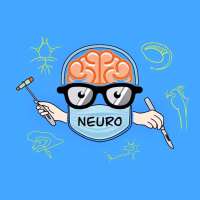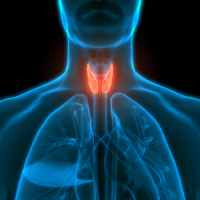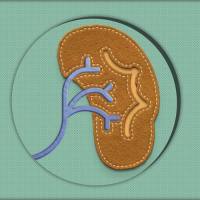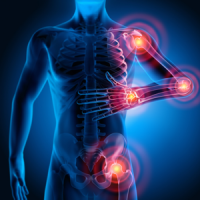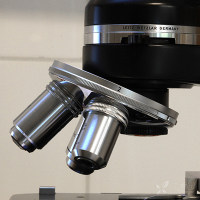6分钟脱稿科普——房室传导阻滞(2)(来自8.23判图错误的反思学习)

However, another large proportion of cases are a result of ischemic heart disease, which is when the heart cells don’t receive enough oxygen and can die off, as with a heart attack. This again leaves scar tissue that can block the electrical signal. In fact, it’s estimated that about 20 percent of patients that have a heart attack go on to develop a heart block.
Finally, it’s worth pointing out that the electrical conduction system is kind of like the electrical wiring in the walls of a house, so it makes sense that diseases of the heart muscle walls — or, cardiomyopathies— and inflammation of the heart muscle — or, myocarditis — can both cause heart block.
An atrioventricular, or AV block, describes when the signal is delayed or blocked when it’s trying to move from the atria to the ventricles. First-degree AV block is when the signal is delayed, but still makes it to the ventricles. This type has a PR interval greater than 200 milliseconds. Even though these signals are delayed, in first degree block, they still reach the ventricles. First degree block isn’t usually associated with any symptoms. Treatment or management of first degree block might involve identifying electrolyte imbalances or causes due to medications, but it usually doesn’t require further treatment.
Second degree AV block can be split into two types. Type I, called “Mobitz I,” or sometimes “Wenckebach,” happens when the PR interval gets progressively longer with each beat until a P wave is blocked completely. So, maybe the first PR interval is 200 ms, then the next is 260 ms, then 300 ms, and finally the next one doesn’t make it to the ventricles, and you get what’s called a “dropped beat.”
When a signal doesn’t make it to the ventricles from the atria, and if a long enough time passes by — let’s say about 2 seconds — then the ventricles’ pacemaker cells kick in, sort of as a fail-safe mechanism, called a ventricular escape beat. Most people with this type don’t have symptoms, but occasionally patients feel lightheadedness, dizziness, and syncope.
Second degree AV block, called Type II, or “Mobitz II,” is similar to Type I AV block in that you get intermittent dropped beats. However, this time they happen fairly randomly, so you don’t have the progressive lengthening of the PR interval. A lot of times, a ratio for the overall number of beats conducted to not-conducted is given, like 2:1 Mobitz II AV block, but again, remember that the dropped beats happen fairly randomly so we can’t really predict exactly when the next beat will get dropped. Most people with Mobitz Type II do feel symptoms, such as fatigue, dyspnea, chest pain, and syncope, though the severity can vary from patient to patient.
Third degree, or complete heart block, describes when the signal is completely blocked while moving from the atria to ventricles, every time. So in this case, even though the atria might be going along at 60 bpm as if everything was normal, none of those signals make it down to the ventricles, and the ventricles struggle along with escape beats at very slow rates, probably closer to 30 bpm. Patients with complete heart block are usually symptomatic, with symptoms such as syncope, confusion, dyspnea, and severe chest pain. These patients are at risk of dying.
另一种占比较多的病因是缺血性心肌病的结果。当心脏细胞没有得到足够的氧气时,它们可以坏死,以心脏病发作的表现。这个部分留下的瘢痕组织可以阻滞电信号,事实上,约有20%的患者有一个心脏病发作后继续发展成心脏阻滞。
最后,值得指出的是电传导系统。就像在家里墙上的电线wiring一样,所以讲得通心肌病/心肌病和心肌炎/心肌炎,这些都可以引起心脏阻滞。
房室传导阻滞/AV阻滞通常被描述成当电信号正尝试从心房到心室ventricles 时,电信号被延迟/阻滞时。
一度房室传导阻滞是当电信号被延迟,但是仍然成功的传到心室,这种类型的房室传导阻滞有一个大于200毫秒的PR间期。即使这些信号被延迟,在一度阻滞中,它们仍然能到达心室。一度阻滞通常不伴有任何症状,一度阻滞的治疗和管理可能涉及证明电解质紊乱electrolyte imbalances/药物引发的病因。尽管它通常不需要进一步的治疗。
二度房室传导阻滞可以分为成两种类型,2度1型,叫做莫氏1型或者文氏阻滞
wen/cke/bac/h)发生时,PR间期随每次搏动进行性延长,直到一个P波被完全阻挡,所以可能第一个PR间期就是200毫秒,然后下一个260毫秒,再下一个300毫秒,最后下一个P波没有成功的传到心室,你可以得到这个叫做一个心搏脱落dropped beat的词。当一个电信号没有成功的从心房到心室,并且如果有一个足够长的时间过去,让我们说大概2秒,然后心室起搏细胞起搏kick in,这是一种安全保护机制fail- safe,我们称之为一个心室逸搏escape beat。大多数这一型 的患者没有症状,但是有时occasionally患者感到头昏lightheadness,dizziness眩晕,和syn/co/pe晕厥。
二度二型房室传导阻滞,或莫氏2型,与一型房室阻滞相似,你会有间歇的脱落的心跳intermitted dropped beats。只是这次他们发生的比较随机,所以你无法有一个过程型延长的PR间期。所以如果我们对心电图整体观察的话get a more zoomed out look at ,一些P波后有一个QRS波正好在它们后边,有一些没有,并且跟随逸搏,与莫氏一型不同的是,每次搏动时,PR间期保持不变,也不会过程性(渐渐)的变长。很多时候全部的下传与未下传的心跳数量比例会被给出,a lot of times a ratio for the overall number of beats conducted to not-conducted is given .比如2:1(to)莫氏二型房室传导阻滞。但是请再次记住,心搏脱落时随机发生的。所以我们无法真正准确的预测何时下一个心搏会阻滞。大多数莫氏二型的患者能感到症状,比如乏力fatigue,呼吸困难dys/p/nea,胸痛,晕厥synco(e)pe.尽管严重程度可以在患者到患者不同。
三度房室传导阻滞,或完全性心脏阻滞,被描述成当每次从心房移动到心室的时候,信号被完全阻断。所以在这种情况下,即使心房可能自己按60次/分进行,就像一切是正常的,没有电信号成功下传心室,心室孤身奋斗,以非常慢的逸搏心律,大约接近于30次/分。有完全型房室传导阻滞的患者通常有症状,包括晕厥syncope,意识障碍confusion,dyspnea呼吸困难,严重severe的胸痛,并且这些患者有死亡dying 的风险。









